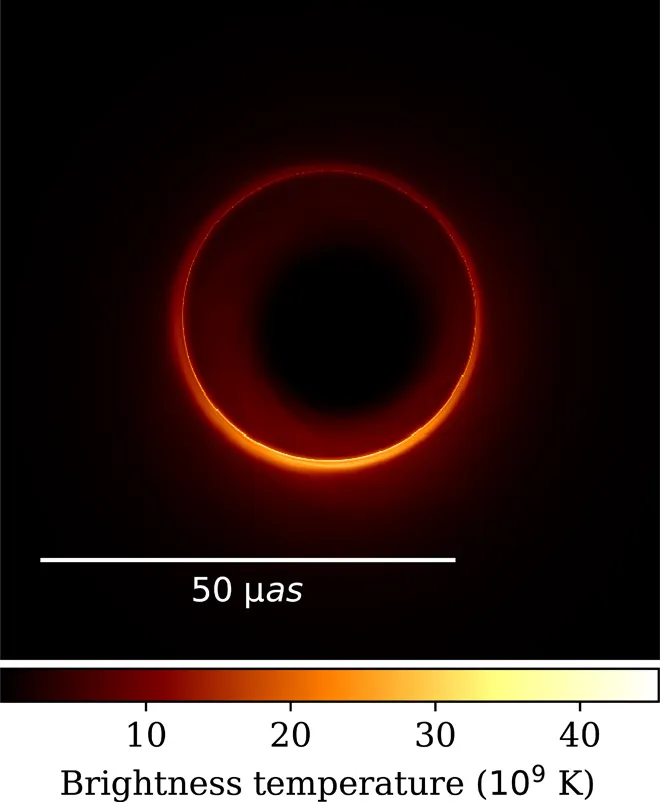To Image a Black Hole Again, Scientists May Need to Put a Telescope on the Moon
New calculations show that the ring of light surrounding a black hole is actually made up of infinite subrings that can’t be seen with current technology
/https://tf-cmsv2-smithsonianmag-media.s3.amazonaws.com/filer/80/84/80841ad8-e3b7-402d-8e63-631d4ca38b58/black_hole_-_messier_87_crop_max_res.jpg)
Last year, for the first time, the Event Horizon Telescope (EHT) project imaged a black hole, resembling an orb of darkness shrouded by a fiery, eye-of-Sauron-like halo.
The image, though groundbreaking, was imperfect, featuring a hazy, out-of-focus ring of light and gas that escaped the black hole’s immense gravitational pull. Understanding this ring, which sits just outside the black hole’s border, or event horizon, is key to sussing out the nature of the massive object it encircles. But so far, “we’ve caught just a glimpse of the full complexity that should emerge in the image of any black hole,” Michael Johnson of Harvard University tells Hamish Johnston at Physics World.
Johnson and his colleagues have now published new calculations in the journal Science Advances that sharpen up this loop of light. Their models reveal that the apparently single “ring” actually consists of an infinite set of concentric “subrings” piled together, each thinner than the one just outside it. Each of these circlets, the researchers say, records a chapter in the black hole’s history—and, perhaps, could someday be properly visualized by sticking a telescope on the moon.
As Camille M. Carlisle reports for Sky & Telescope, each subring consists of photons of light, emitted by the extremely hot gas that sits just outside the event horizon. Photons move faster than anything else in the universe—but this close to the black hole’s immense gravity, their trajectories get bent inward, collectively forming a circle.
Eventually, these hostage photons can escape, but only after completing a certain number of loops around their black hole captor. The more laps a photon has run, the closer it lies to the event horizon.

The behavior of these photons and the properties of the rings they comprise tell us a great deal about the black hole that shapes them. Researchers are especially keen on measuring the spin and mass of black holes—two properties that can reveal “everything there is to know about the black hole,” Johnson tells Mike Wall at Space.com.
EHT leveraged the power of eight observatories at once, amassing the combined power of a telescope as large as the entire Earth. Even then, it yielded imprecise measurements of M87’s black hole. Zeroing in further would require something even more technologically advanced—something Johnson and his team think could be accomplished by deploying a couple extra observatories into outer space.
With these annexed telescopes in tow, the extended EHT array might be able to pick up on finer details in the black hole’s subrings. The further out this telescope goes, the more precise measurements might be. “Once you get out to the moon—that’s where I think we would really be looking at entirely new science,” Johnson tells Space.com.
Of course, placing a telescope onto the moon’s surface isn’t a small ask. But Johnson tells Space.com that if all goes well, a lunar observatory could be within our not-so-distant future, perhaps within a decade or so.
If that does happen, it will be well worth the effort. “Black holes are giving us this gift, this signal unlike anything that’s been studied in astronomy,” he tells Space.com. And expanding EHT’s reach could give scientists “a whole new way to measure them.”
/https://tf-cmsv2-smithsonianmag-media.s3.amazonaws.com/accounts/headshot/10172852_10152012979290896_320129237_n.jpg)
/https://tf-cmsv2-smithsonianmag-media.s3.amazonaws.com/accounts/headshot/10172852_10152012979290896_320129237_n.jpg)